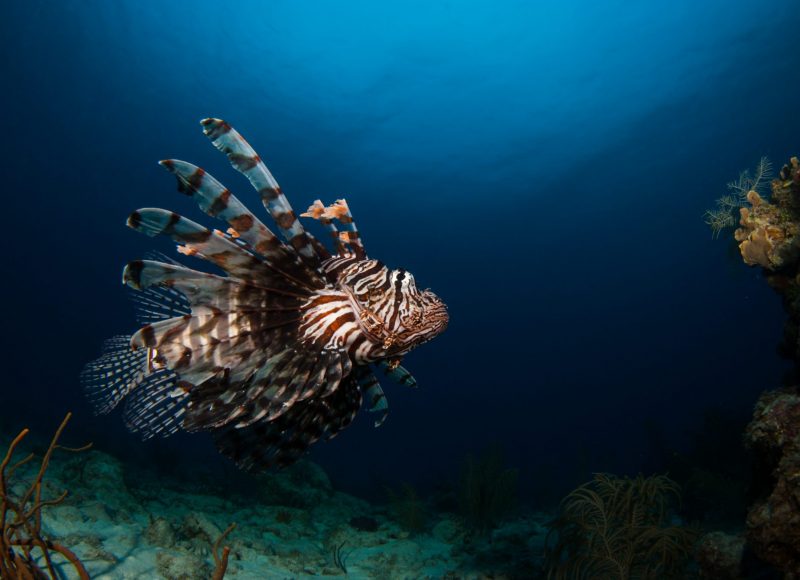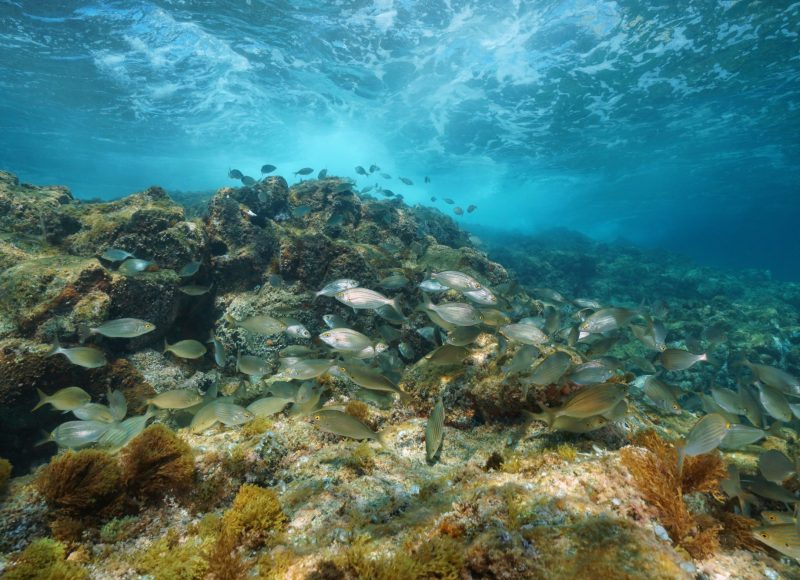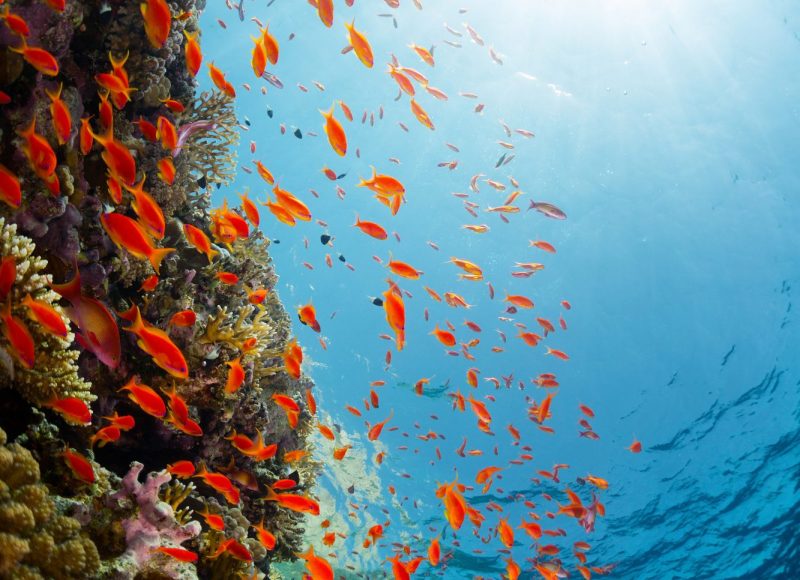ECOSYSTEMS THAT ARE RICH BUT UNDER THREAT
The deterioration of coastal zones is one of the most serious biodiversity crises we are facing. Throughout history most human societies have settled along coastlines, and 44% of the global population currently lives within 150 km of the coast. Marine biodiversity is at its greatest near the coast. For example, coral reefs take up less than 0.1% of the sea floor but are home to about one million multicellular species, including 6,000 fish species. However, these coastal marine ecosystems are under threat from the destruction of habitats, pollutants being tipped into the sea, over-fishing, climate change and the introduction of exotic species. According to the International Union for Conservation of Nature (IUCN), more than half the species of rays and sharks in the Mediterranean are already facing extinction.

ASSESSMENT AND PROTECTION MEASURES
Marine Protected Areas (MPAs) are delimited spaces in which human activity is controlled to ensure the conservation of biodiversity and associated services. They cover nearly 8% of the ocean, although the «Strategic Plan for Biodiversity», ratified in Aichi in 2010, set a goal of 10% cover for each country by 2020. In addition, in many MPAs restrictions are very limited. To deal with the rapid expansion of human activity and the loss of marine biodiversity, a world nature agreement put forward by a broad coalition of environmental organisations now calls to protect 30% of the ocean by 2030.
Nevertheless, reliable species inventories are needed to assess the benefits of existing MPAs, create new ones and measure human impacts on biodiversity. Numerous methods have been used to monitor coastal marine species in recent years. However, most of them are destructive (fishing or using chemical products), limited in depth (< 30 m) and in the area sampled (diving), or require heavy equipment and many hours of analysis (underwater videos). What’s more, all these protocols are invasive and results may be biased by more elusive animals, such as sharks, fleeing the surveyarea, or by smaller ones (cryptobenthic fish for example) not being detected at all.

NEW BIODIVERSITY INDICATORS
Since 2018, members of Vigilife have been working on a new generation of indicators to measure health status of coastal bodies of water based on eDNA. Water samples were taken within 6 Mediterranean MPAs, as well as 5 and 10 kilometres from their borders, to detect fish species present along a gradient of human impact.
MPAs do not contain a greater diversity of fish than unprotected, neighbouring sites.
Meanwhile, a genetic reference database for Mediterranean fish has been developed so that the filtered fragments of eDNA can be assigned. Very high species diversity (> 100) was recorded with this method, along with a major and counter-intuitive result: MPAs do not contain a greater diversity of fish than unprotected, neighbouring sites. However, there is a difference in species: protected areas contain more pelagic and commercial species, while the unprotected ones contain more cryptobenthic species (length < 10 cm). This discovery suggests that greater diversity on a regional scale could be achieved where patchworks of protection levels are set.
EXPANDING TO DEEP COASTAL ECOSYSTEMS
As part of Vigilife, numerous coastal bodies of water will be studied in order to monitor the effects of MPAs over time and to help define new ones. eDNA will make it possible to sample a greater number of habitats in deeper zones where traditional methods are of limited use. Indeed, these mesophotic and rariphotic habitats (from 30 to 300 m) are usually ignored in monitoring, but potentially offer refuge to various species due to the reduced impact of fishing and the mitigation of climate change effects.

© Laurent Ballesta
